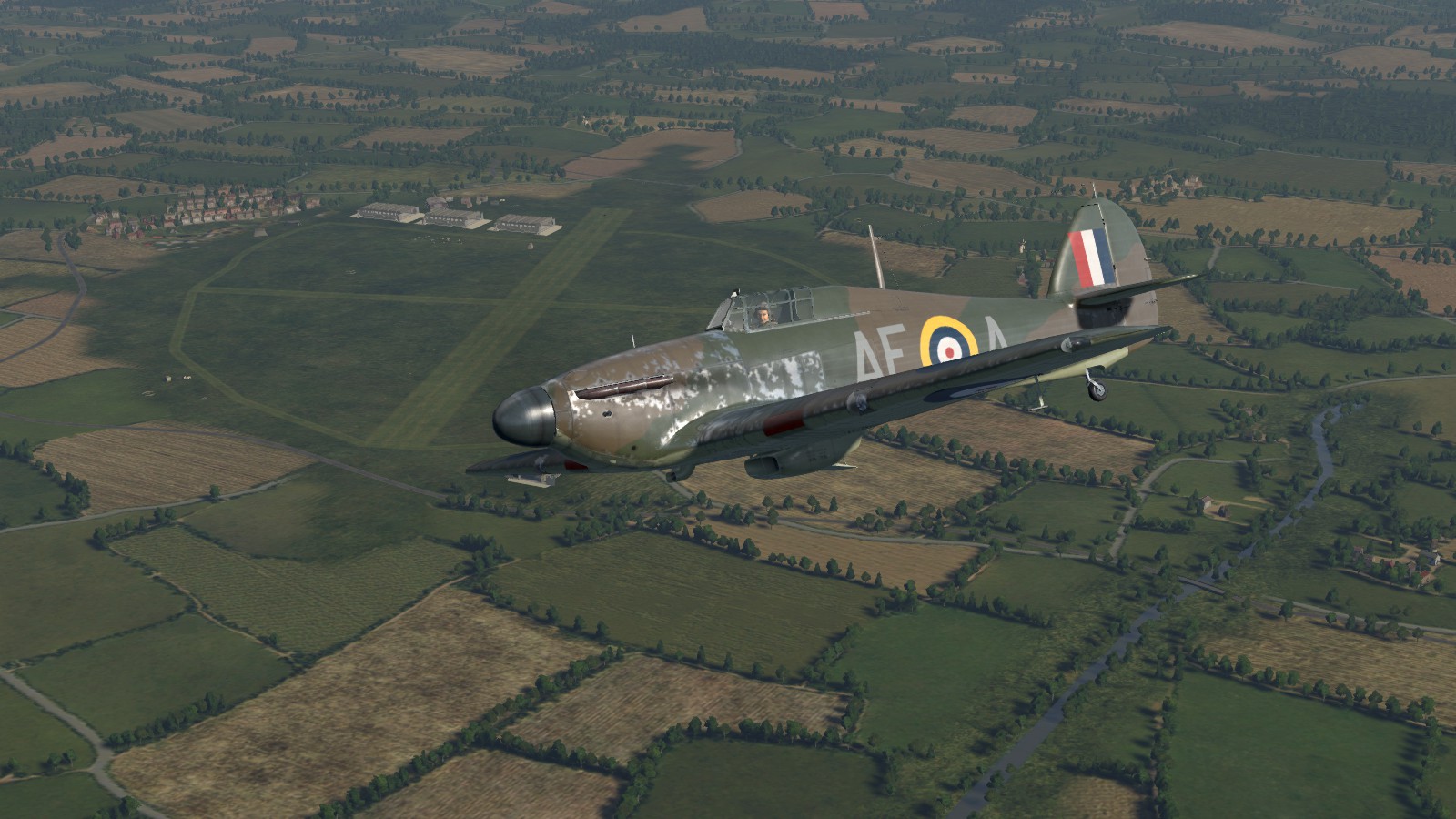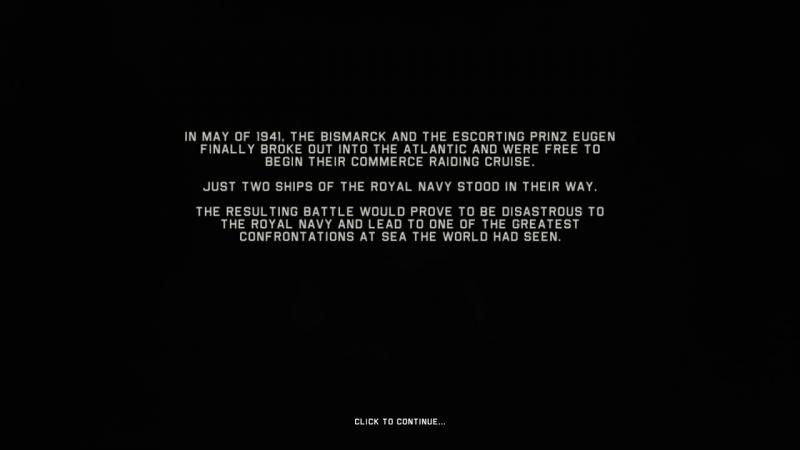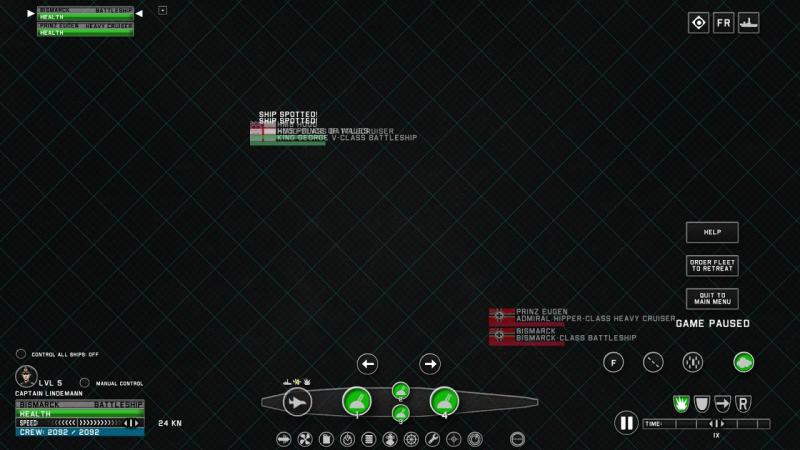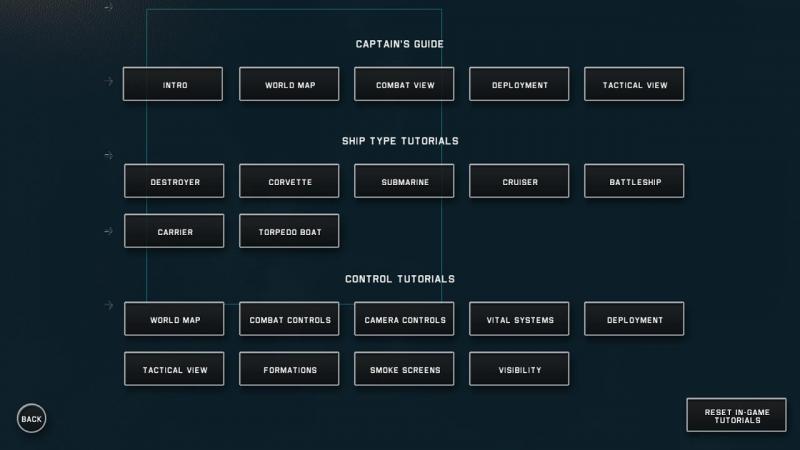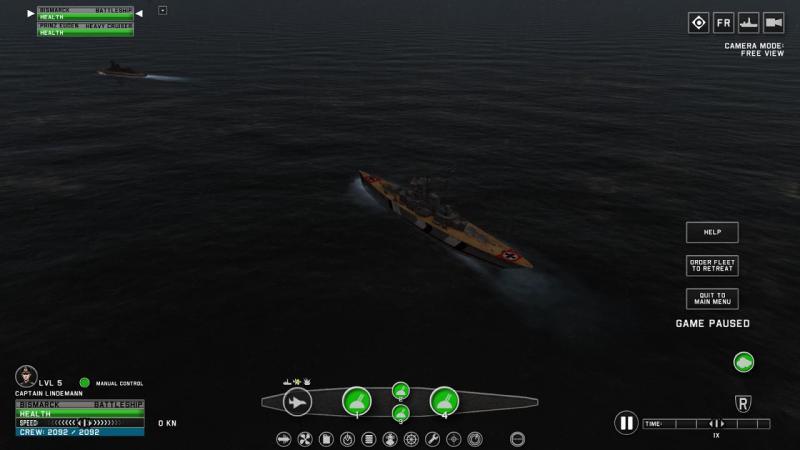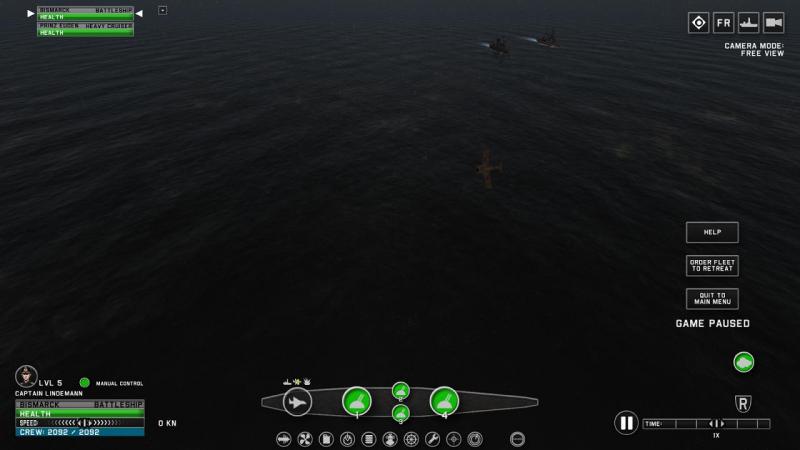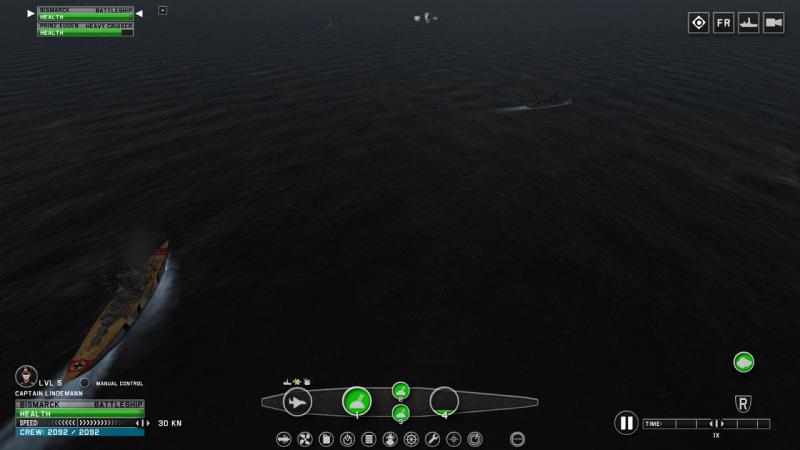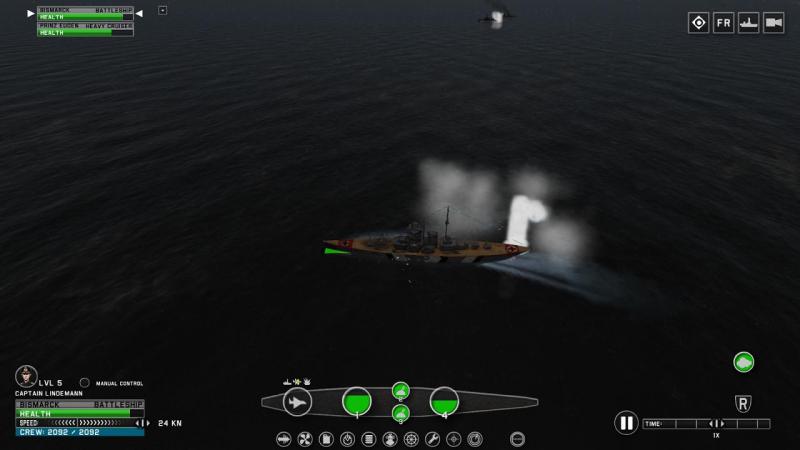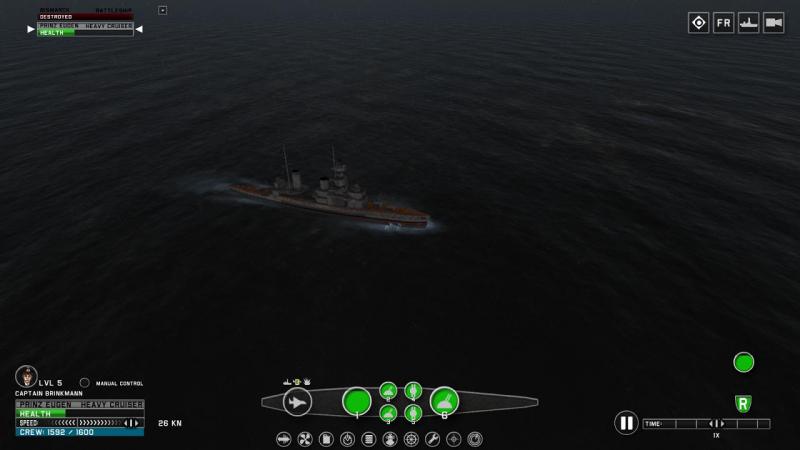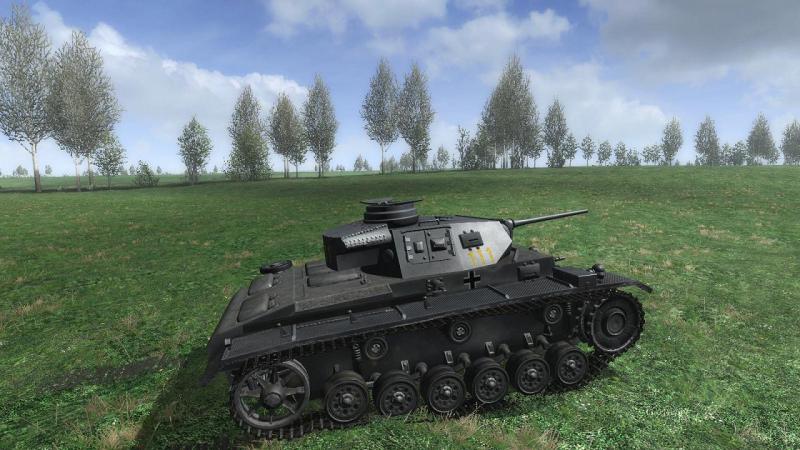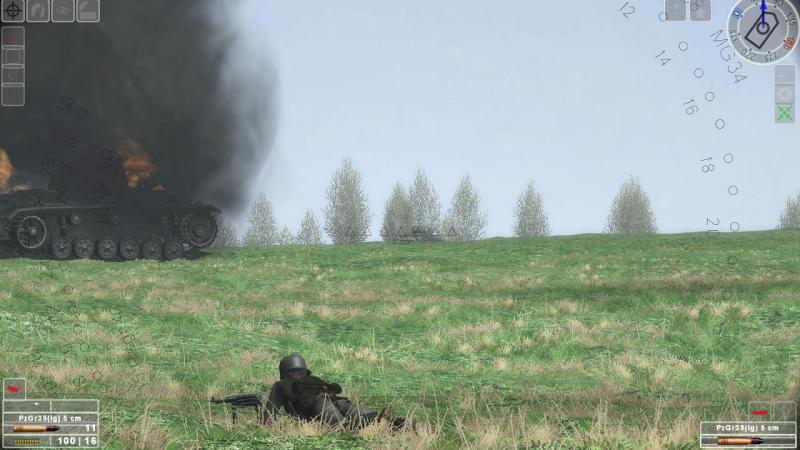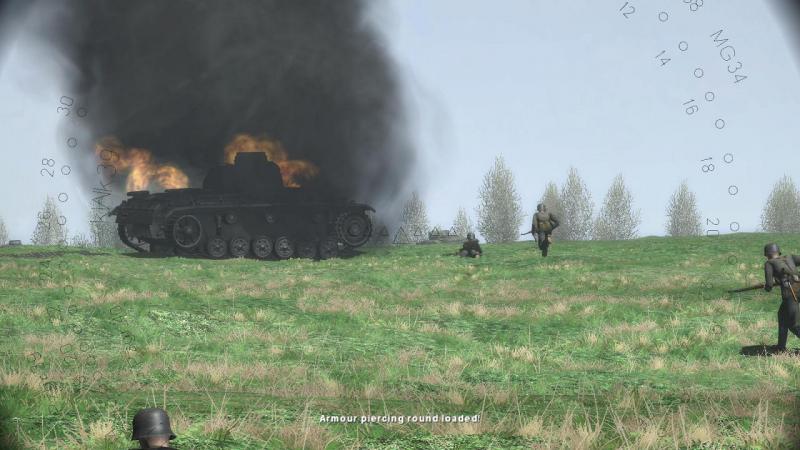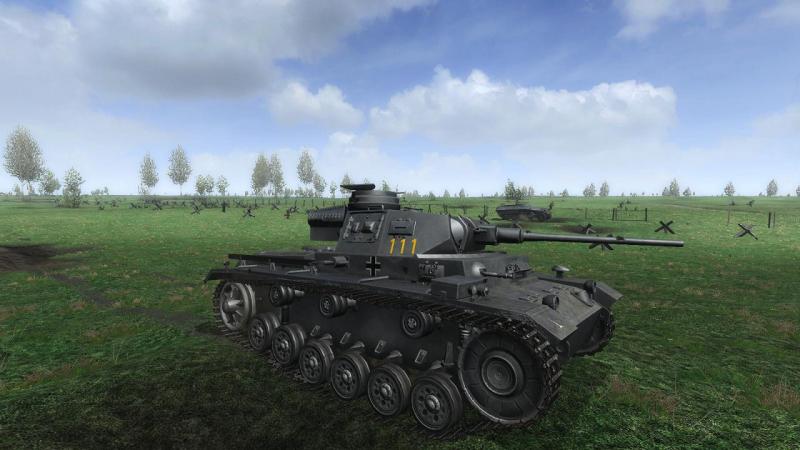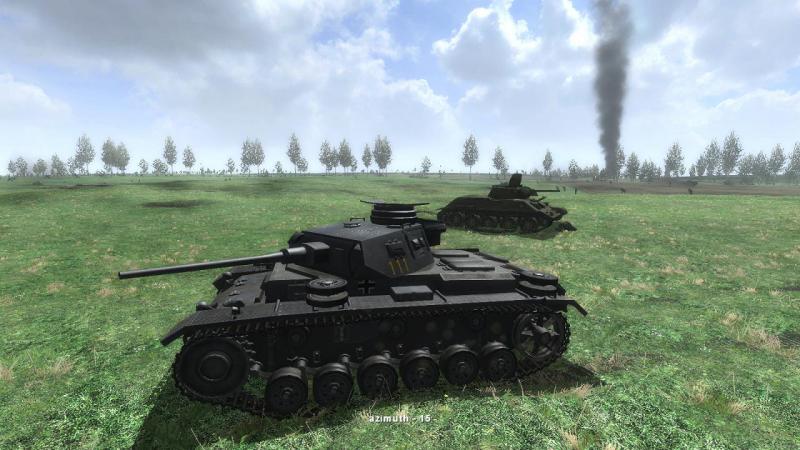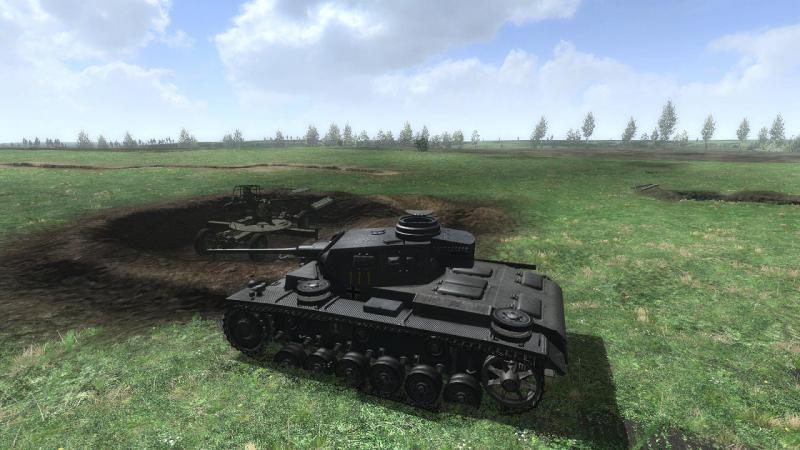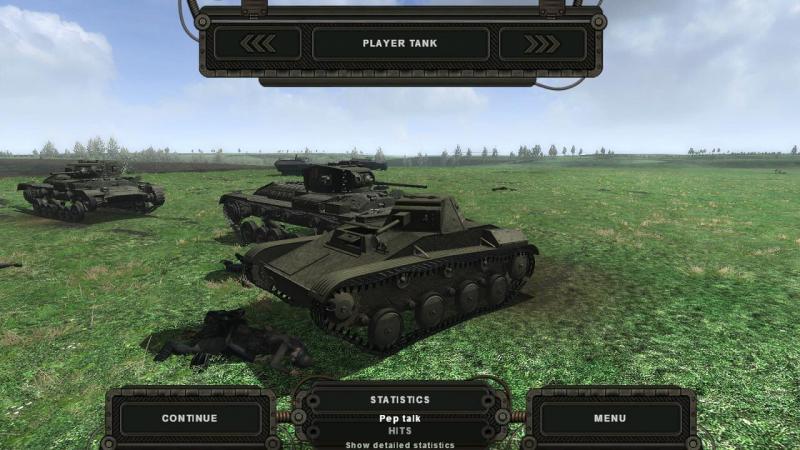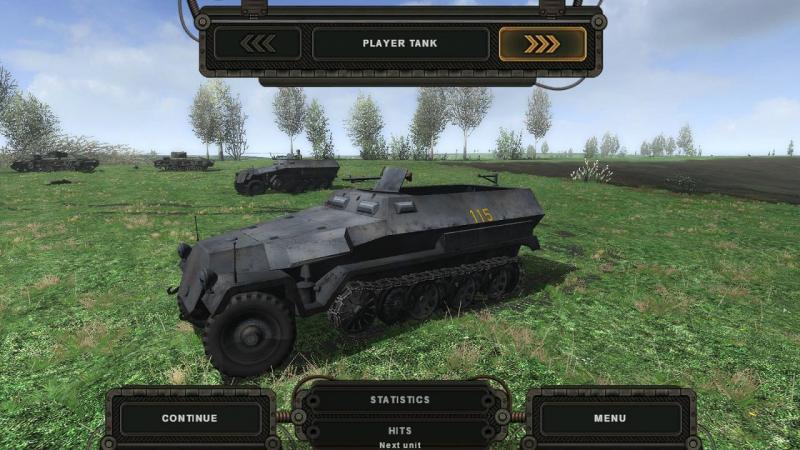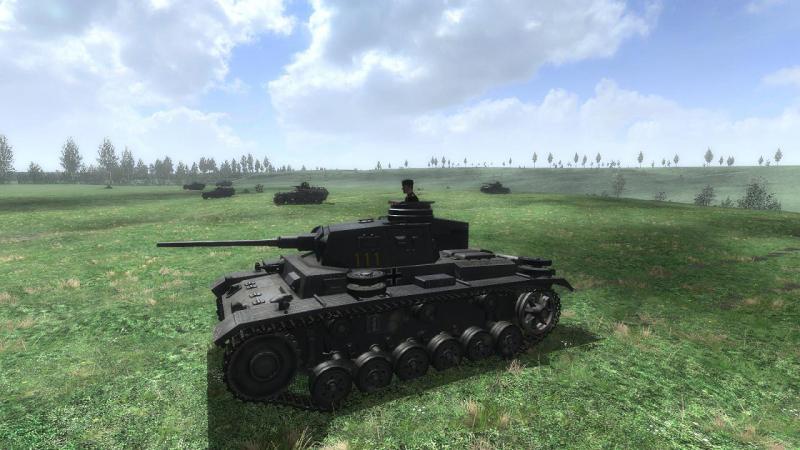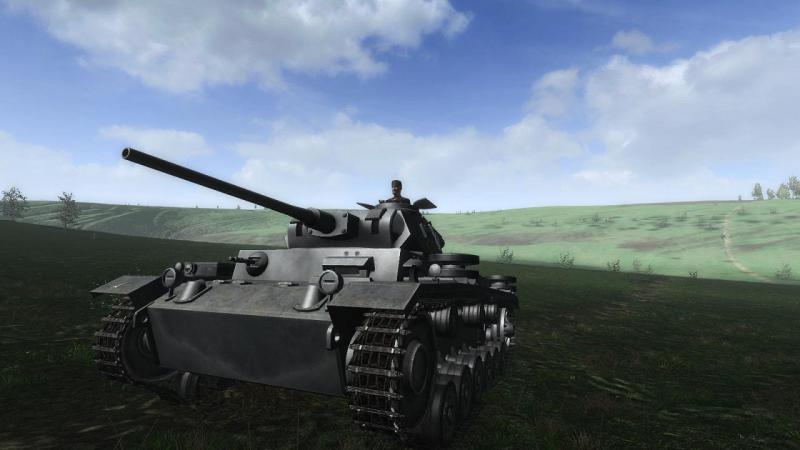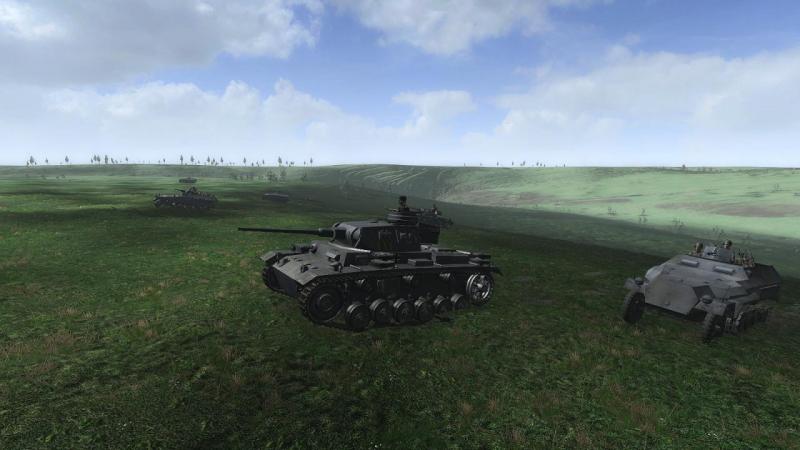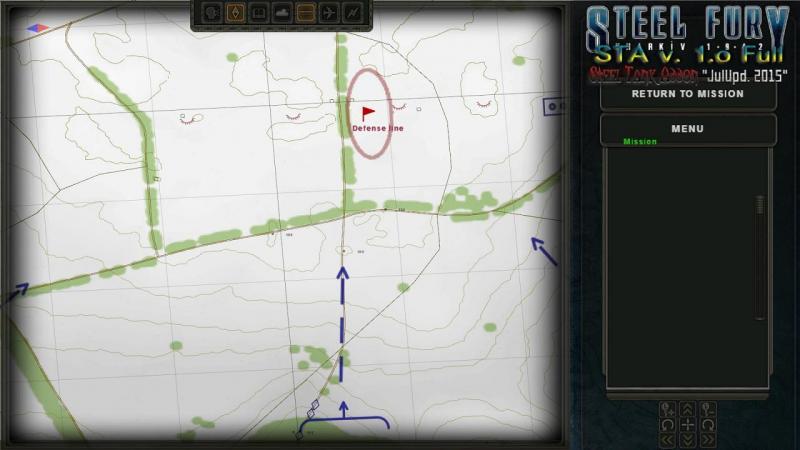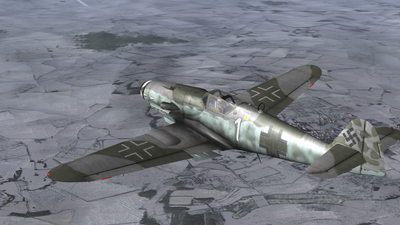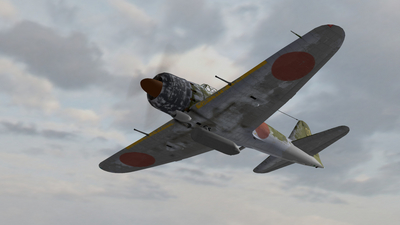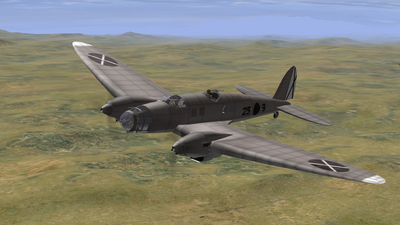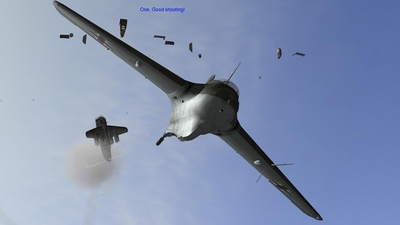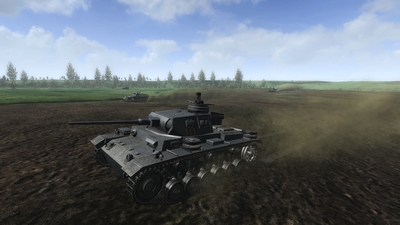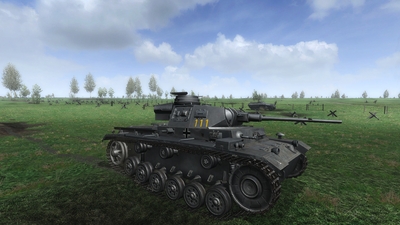-
Posts
3,749 -
Joined
-
Last visited
-
Days Won
7
Content Type
Profiles
Forums
Gallery
Downloads
Store
Everything posted by 33LIMA
-
Custom Battles Before we go on campaign with Victory at Sea, it's worth describing the Custom Battle option. In fact, there being plentiful help but no tutorial mission, creating a custom battle is probably the best way to familiarise yourself with sailing and fighting your ship or ships, in VaS. You don't get to choose a theatre - it's all at sea so that doesn't matter much, right? From the Custom Battles setup screen, you do get to choose: - the points limit for each side - 'unlimited' is one option; - which nation's ships you play with and against (options being USA, Japan, Britain, Germany, France (Free or Vichy), Netherlands, Italy); - which ships and how many of each, are on each side (depending on the chosen nationality); ...and under 'Battle settings': - what type of battle you want to play (options being 'regular' [meeting engagement], port attack or defence, convoy attack or defence, blockade attack or defence). - the weather (options being clear, cloudy, rain or snow); and - time of day. For familiarisation, it's best to pick 'Convoy Attack' which auto-generates a small convoy of merchantmen for you to use as live targets. You must choose at least one enemy warship though, but it can be something relatively inoffensive, like a Flower Class corvette or two! My favourite Fighting Steel missions were the two variants of the Battle of the Barents Sea, when Admiral Hipper and Admiral Scheer with some destroyers tried to destroy a lightly-escorted Arctic Convoy. In the setup screen below, I have selected forces based on one of these actions, with Hipper and three of the big German destrovers against four of the smaller but more seaworthy British J/K/M Class destroyers. For a pure practice mission, I'd definitely suggest replacing the escorting destroyers with Flower Class corvettes - you don't want to catch a torpedo while training! When you start the battle, you get a deployment screen like this, which I think is common to campaign missions, although in this case the ability to drag your ships about is limited to the bottom edge of the large deployment box (brighter blue border). I don't know what the distance the smaller grid squares represent, nor the meaning of the arrows on the left. A sensible addition to this deployment screen - and to the Tactical and Combat Views - would be a compass rose or at least an arrow to indicate north, for orientation. Clicking 'Next' to end deployment and start the battle takes you to the same Tactical View, with action paused, seen earlier for the Historical Mission option. By default, your force is in 'Attack' mode (other options being 'Move', 'Defend' or 'Retreat'); so when you un-pause, your ships move to engage the enemy (you start by default just outside maximum range). In the screenshot below, taken in the Combat View as the battle starts, my heavy cruiser - the sim has chosen Prinz Eugen for me, from the Hipper Class - is on the move, with full icon details turned on. The mission has started with my spotter aircraft airborne and nearby, highlighted by the little group of red diamonds; there may be a way to start with it stowed, the use of these planes being very limited in WW2, except for the Pacific or South Atlantic. The next screenshot, taken soon after (with FRAPS, there being no screenshot facility built into VaS, AFAIK), shows two of my destrovers, with labels turned off. Note the text at top of screen is displaying progress towards mission objectives. The mission will end automatically when victory or defeat has been achieved. Playing some custom battles for training purposes, I'm finding that ship and weapon control is perhaps not quite up to Fighting Steel standards. For one thing, the interface is a bit more 'gamey' whereas FS tried to make things look and feel more 'naval' eg no labelled 'Health' bar and steering in FS is by reference to a compass rose with headings displayed. And while you can fire torpedoes, VaS doesn't let you control their spread, which FS did. The biggest difference seems to be that in VaS, your ship is either 'full AI' or 'full manual'. In FS, you could designate a target (or targetting mode) and your AI crew would continue firing until you ordered otherwise. Issuing a steering command, for example, or ordering a change in speed, would not interrupt any of this. In VaS, things work differently. Under AI control, you do have some overall say: you can order an attack posture (amongst others) but once you start issuing steering or fire control orders, everything switches to manual control. Apart from steaming on, it appears that as a general rule your ship will then do nothing, except by specific player command. So far, the big negative with this seems to be that when under manual control, fire control is very manual. You have to order every salvo and its target, for every weapon system (generally main armament, secondary armament or torpedoes; AA guns seem to be the exception that proves the rule, engaging planes automatically). A 'semi-automatic' facility would be much better - as in FS, order a target for each weapon then the AI executes that order until told to do something else, even if you are in the meantime ordering changes to speed or heading. As things stand, once you take over manual control, it seems to me that you have to call every shot or salvo. I hope I'm missing something here; if not, this would really benefit from an update. While AI control in VaS seems reasonably effective and gives the player some 'oversight' control via choice of posture (Attack/Defend/Move/Retreat) there are times when you will want to intervene (eg change course or speed) and change one thing, without suddenly finding yourself having to do everything. Micro-managing a ship can be hard enough in a small action, but is likely going to be a real pain in a bigger fleet action. I need to spend more time in VaS before I've really got the hang of ship handling in battle, and I daresay I'll become more accustomed to and at ease with the VaS way of doing things. While I would like a more 'naval' and less 'gamey' interface and a 'less manual' form of manual control - and improved ship models! - I must say that I remain highly impressed with the sim's excellent capabilities, scope and design. And yes - simplified as it is, I do think VaS merits the 'simulation' tag - as designers of good wargame rules know, you can simulate something effectively, without necessarily reproducing it in every detail. I'm still getting the measure of the AI, which seems generally competent. I have seen ships which are manoeuvring close together get onto collision courses then 'jiggling' to avoid each other; and it may be that there is a tendency to close the range a bit too enthusiastically, although I have also seen damaged ships decide enough is enough and withdraw. In general, so far the VaS AI is looking to be up to the job. Earlier, I used the Custom Battle option to set up a recreation of the Battle of the River Plate, with a pocket battleship against a pair of Leander Class 6-inch cruisers and a York Class 8-inch cruiser. As in the real battle, I paired off my Leanders (just like Ajax and Achilles) and operated my York (Exeter, in the real battle) independently. I'm already getting used to deciding when to allow 'supervised AI' control and when to step in myself and the result was an exciting and engaging little fight, which I was able to leave mostly to the AI. The sounds of gunfire, engine noise, hits and other intermittent audio effects backed up most effectively the excellent visuals, with shells splashing, tracers arcing and torpedoes lancing as the ships fired and manouevred pretty convincingly. In the end, I lost one heavy and one light cruiser, but we got the pocket battleship. Marvellous stuff! For what I want most from a WW2 naval sim, Victory at Sea fits the bill with just the Historical and Custom Battles, alone. And that's just from the surface action standpoint - remember, VaS can do submarine and aero-naval action, as well! I don't think you can save and reload a Custom Battle but they can be generated really quickly. And they are a great way both to find your sea legs and to fight any action you fancy, whether re-creating a real fight or generating one of your own imagining. I haven't tried them yet but the 'Port Attack/Defence' options are probably also good practice for campaigns, as this type of action seems to be a feature of the campaigns in Victory at Sea...which is where we are headed, next. ...to be continued!
-
Enemy in sight! - Battle of the Denmark Straits For my combat try-out with a Victory at Sea Historical Battle, I decided to go for the famous fight in May 1941 when Hood and Prince of Wales, directed onto their prey by the shadowing cruisers Norfolk and Suffolk, intercepted Bismarck and Prinz Eugen in the Denmark Strait, trying to break out into the North Atlantic. I opted to play the German side. When launched, the battle opens in the 'Tactical View', which has the appearance of a map, but is actually a zoomed-out 'satellite' view. The action is paused by default and VaS therefore enables you to give orders to your ships, while paused; so you have plenty of time to think and make a plan. Here's how this looks: This is where you first make the acquaintance of the screen icons that are the main means of exercising control, with some also having hotkey equivalents. Top left, you have a fleet list, just two in this case. Here you can mouse click to select the ship you want to control directly. Top right, are icons which control mainly camera mode and which unit icons are displayed next to each ship - options being none, flags or flags+ship ID. Bottom left is another block for the selected ship, with a mouse-dragable 'throttle' and radio buttons which enable you to turn your selected ship over to AI control and to elect to control all your ships manually, both of which are useful options. Bottom right is a variety of icons for various orders including posture (attack, move, defend, retreat), formations (just column and circle are available), smokescreens and time compression. Bottom centre is the main control icon for your currently-selected ship, from which you can select weapons, launch your spotter planes and view damage, with the little row of icons beneath going red as systems suffer damage. Interestingly, if you click the 'Help' icon over on the lower right, you get a pretty comprehensive clicakable version of the 'Captain's Guide' manual, which covers its content section by section, possibly also with some additional stuff. It's a great little resource, at your fingertips in-game, which you can pause the action to review. Neatly, each section is presented in the format of a short training film, with an animation and voice-over. Now that's what I call thoughtful, thorough design - top marks, Evil Twin! In the real battle, the RN cruisers Norfolk and Suffolk were present but took no part in the battle and they're not represented in VaS's rendition [Edit - the two heavy cruisers did show up when I replayed this battle from the RN side, so maybe I just missed them]. What you do get, though, are the participating warships' spotter planes, in the air from the start. They are the things indicated by the little diamond-shaped groups of red (German) or blue (British) dots, which you can see on the Tactical View, near the ships. I believe the real battle was seen from a nearby British maritime patrol aircraft - a Sunderland I think - but the ships' spotters played no part. Switching to the Combat View with the action still paused, I got my first view of my ships. As you can see, Bismarck is my currently-active ship, displaying the Baltic recognition markings (including prominent black and white stripes and [here de-swastika-ed] deck markings) that were painted out before the Germans made for the Atlantic. Bismarck isn't one of the worst VaS ship models but her stern is heavily flared, her 15 inch turrets look a bit small and some of her 5.9 inch secondary turrets are in odd positions. Still she makes an impressive sight even in the dull conditions, with her heavy cruiser consort ahead (I had ordered column formation before leaving the Tactical View; if there is a way to decide the order of ships in a column, I don't know what it is). You have quite a lot of camera control in VaS, reminiscent of Fighting Steel, but the view above is about as close or low as you can get. It would be good to be able to go a bit lower in the Combat View (so as to see a decent distance from your ship, without having to zoom out) and to zoom in a little closer. We're still out of range so when the action is unpaused, there's still no shooting. In the zoomed-out view below, you can see that one of our spotter planes is flitting about, just off Bismarck's stern. I should perhaps have tried to order him to spot for us but it didn't ocurr to me; with the British ships charging straight at us, I was under a certain amount of pressure, though I could have paused again at any point. You can just about see Hood and Prince of Wales in the next screenshot, at the very top edge of the screen, in the centre. As with Fighting Steel, the 2-d view (Tactical View in VaS) is more useful for keeping general tabs on a battle, although it's a great pity that you do not see the tracks of ships plotted, which Fighting Steel does. Introducing track plotting to VaS would be a big improvement. Using the camera controls in the Combat View; it's possible to track the camera where you want. In the pic below I have tracked over to Hood (right) and Prince of Wales (left). You can see one of their spotters in the foreground; it looks to be a biplane with floats, which is about right. When close enough, you can hear the buzzing of the aircraft engines or the 'thrumm' of the moving warships. My mission being hunting convoys not risking a fight with enemy capital ships, I should have refused combat and considered a successful escape a victory. But I decided to fight it out as per the historical battle. I would try to 'cross the enemy's T', turning to cross his path and hoping he would continue towards us in his anxiety to bring us to battle, much as in real life, where the British didn't 'open their 'A' arcs' (turn to bring their rear turrets to bear) until it was too late. Changing to my lead ship Prinz Eugen, I checked the range, which was displayed via a light blue arc. The enemy were just about to come into range so I ordered Prinz Eugen to engage Hood and Bismarck to take on Prince of Wales. Soon after that, the shooting started. I decided to let the AI take it from there and turned off 'Manual control' (you can see the icon, bottom left, is no longer illuminated green). You can also see that Prinz Eugen has turned to starboard while Bismarck is shooting ahead with turrets Anton and Bruno. Our shell splashes indicate that we have already straddled Hood and you can see some of Bismarck's rounds in flight. There are accounts of crew looking along the line of flight catching sight of outgoing rounds but this isn't really realistic, though commonplace in video games. I do like it, though, and it's fairly unobtrusive in VaS. In the next pic, things have begun to happen very fast. Prinz Eugen is operating independently under AI control, and is off screen, to the right. Bismarck, also AI-handled because I have turned off Manual Control, has sensibly turned to open her 'A arcs'. Enemy rounds are falling nearby and getting some hits. The green wedge under my port bow indicates a turn being executed - as you can see this from a ship's wake, it would be better not to have these indicators, or at least, to be able to disable them. The enemy ships have also started to operate independently, one seemingly tracking Bismarck, the other Prinz Eugen. At this point it became apparent that Bismarck was targetting the ship that was after Prinz Eugen, ignoring the more immediate threat. Before I could resume manual control, we received some serious hits, indicated by red and yellow damage text displays, rising from my ship. There really should be an option to disable these rather obtrusive messages, because the 'Health' bar (yuk, 'Damage' would be a better, non-gamey label) and the bottom row of damage icons tell you what's happening, already, on your own ship (and you should not get this kind of read-out for enemy vessels). Replacing the animated text damage messages with an audio damage report, as if from a crew member on your bridge, would be a good move (Fighting Steel has some such audio reports). It would be fine, just to eliminate them. Further damage quickly followed and Bismarck was described as 'Destroyed' (a bit of an unsatisfactory description for a warship, unless suffering a catastrophic explosion). By this time, Prinz Eugen had also been hit and was sensibly beating a retreat under continual fire. I took manual control of the heavy cruiser and continued to steer her away, trying to lay smoke, though it was hard to tell if it worked or was just smoke from my own damage. However, behind me, Hood had also been hit hard and was smoking, too. Prince of Wales, seen below, looked to be in better shape; but suddenly, both British ships turned away and broke off the action. So, there'd been no repetition this time, of the result of the real battle! At least my heavy cruiser had escaped destruction, though it was a long way back to the nearest friendly port. Well, so what did I make of this? Does it compare with the WW2 surface combat gold standard set (IMHO) by Fighting Steel? Well it's hard to say, as I haven't been playing for long enough. Some things could be better, as I have indicated above, like better ship models, a minimum camera height closer to sea level and drawing of ships tracks in the Tactical View. I have the impression that things could usefully be slowed down a little, for a less frantic and more realistic pace - like the rate at which damage is done, guns reload, or ships respond to the helm under player or AI control. I tried some zig-zags when retreating with Prinz Eugen, chasing the enemy shell splashes as they did to put off the aim of the next salvo, and I don't know if this affected the enemy's aim. The AI has been improved from the original release but I'm not yet sure how good it is. It would be good to factor in reliability; drill mistakes or technical issues can slow down reloads or even put guns or turrets out of action temporarily (as with the brand-new Prince of Wales's 14 inch guns in the real battle). I don't think VaS currently simulates ammo or fuel limits, though for many historic sea fights, this is not a critical omission. However, I have to say that so far, on the basis of its ability to reproduce individual surface actions, I am mightily impressed. With the stated reservations, Victory at Sea really is a most impressive package, potentially and perhaps already a worthy successor to Fighting Steel, with the added advantage of featuring land, subs and planes. If my impressions survive sustained play, I'll have found my long-awaited WW2 naval combat sim. And that's before we get into its capabilities on campaign. If Victory at Sea's campaign and sub and air capabilities are up to the same standard as I've seen in single missions - a big ask - I will be in naval WW2 hog heaven, a Nirvana undreamt of in Fighting Steel, good as it was/is at gun and torpedo action. Time to find out! ...to be continued!
-
Installation and basics Victory at Sea - henceforth, VaS - comes on the usual single DVD in the usual soft plastic case, whose only other contents are a publisher's (Excalibur) advertising leaflet and the aforementioned mini-manual with the three aforementioned short sections - multi-lingual installation instructions (for Windows and Mac); multi-lingual tabular hotkey list; and illustrated 'Ship Categories' section in English (which as mentioned, doesn't cover all included ships; there's a listing here, on the dev's website, which complement may have been added to since). As I said before, the ship models are not great, more 'tabletop wargame quality' representations than detailed miniatures, but the little para of text on each class seems to have been written by someone who has a feel for the subject, which is a good sign. Installation installs the Steam client application, if it's not already on your system. As I'd temporarily forgotten my Steam password, I had to go through the Steam authentication rigmarole until my memory improved just short of a password re-set. Installation was otherwise painless. VaS dates from mid-2014 and its stated system requirements are Windows XP, Vista, 7 or 8 (or Mac OSX 10.8 or above); Core 2 duo 2.4 or higher; min 2 Gb RAM; GF 9500GT 512 Mb or above; and 4 GB or more of free HDD space. As far as I know, the game is only available via Steam, whether via shop DVD or direct download. There have already been several updates, with the developers evidently interested in player feedback and in improving the sim; my installation is 1.3.1 so I think I have the current version, with 1.4 reportedly coming soon, per discussions on the Steam VaS forum. A previous update added the ability to facilitate mods and a few are already available, details of which can also be found on the forum. On starting VaS, you'll find the interface is neat and uncluttered. Here's the home screen. Appropriately enough, menu options are superimposed on an animated and nicely-rendered seascape, to the accompaniment of a somewhat mournful, drumbeat-backed theme. Options are actually quite limited, as the screenshot below illustrates. Within each sub-option, there are only a few things you can tinker with. For example, under 'Gameplay', you can 'Restrict purchasable ships by nationality' (which whatever it means, sounds like how it should be, by default); 'Show individual batteries'; or have 'No night flying'. If there's a full VaS manual installed somewhere amidst all the multi-foldered material in my Steam installation, I have yet to find it; but there's one online here, a 'Captain's Guide'. From a quick perusal, you will quickly see that like Fighting Steel, VaS presents a fairly simplified approach to the two main things you need to get the hang off, namely ship handling and fire control. Simplified, but accessible, and in fact fairly powerful, in putting a lot of stuff at your fingertips and/or on your screen. However, you can forget about manning a Fire Director or a rangefinder, scanning the horizon with your binos from the bridge and hearing the Firing Gongs or the ship's telegraph ringing in speed changes. Nor will you be able to take to the air in your spotter planes, if you have any shipped. But it seems that as captain you have what you need to exercise full control of your ship and its facilities at your disposal, like a crew on your virtual bridge, laid out in a sensible manner I found happily reminiscent of Fighting Steel - and that is a very good thing, in my experience. But more of that shortly. I mentioned earlier that the ability to handle user-made mods was added in one of the game updates. There appear to be just a few mods available at time of writing, most concentrated on improving realism. Currently, the best place to find out about all this seems to be the VaS Steam community forum, which the developers also use eg to announce updates. I haven't tried the mod facility yet and have none installed so far, but here's the VaS mods screen, which looks like a built-in mod enabler, a neat feature which should help keep the game alive and evolving: As an indication of the ships available and their appearance, the screenhots below were taken via the 'Custom Battle' option, from the screen you use to select ships for each side, up to your chosen points limit. In all cases I have scrolled over to the right, so as to display the capital ships available. The top pic, I've set to display British and German ships; the lower pic, US and Japanese. The UK-based developers may release additional ships and it would be nice to see the likes of the distinctive Japanese battleships Ise and Fuso and some other famous capital ships or cruisers. The displayed models rotate on this screen, hence their appearance below. You can see what I mean, about the models being somewhat crude; it would be good to see some improvements here too, whether from the developers or modders. Gameplay OK I've got VaS installed and looked over the options, such as there are of them, and read the full(er) manual, such as there is of it. Time to put to sea and see [sic] how it works, in practice. There are three ways you can play VaS: campaign mode; historical battles mode; and custom battles mode, whereby you can create opposing forces up to a variable points limit (including 'unlimited'), wargame style, and then fight the resulting battle. What I want most from a WW2 warship game or sim is the option in the middle of the list above - the ability to re-fight real actions from World War 2. Like the Battle of the Denmark Straits, Bismarck and Prinz Eugen against Hood and Prince of Wales. Or the Battle of the Barents Sea, with German destroyers and heavy cruisers trying to destroy a convoy escorted by outgunned but brave British destroyers and light cruisers. Or some of the fights between the Regia Marina and the Royal Navy in the Mediteranean, like Matapan. Or some of the vicious and deadly night battles between the USN and the IJN's 'Tokyo Express' over and around 'Iron Bottom Sound' during the Gaudalcanal campaign, launching or dodging 'Long Lance' torpedoes in the dark. Just the sort of thing Fighting Steel did so well - and still does if you can get past the dated graphics and have a machine old enough to run it. So, how does VaS measure up, in the historical action department? Well, the first point is that there are currently just eight 'historical battles' available. Some obscure titles make it less clear what these actually are, but the list is as follows: Battle of the Denmark Straits - RN -vs- KM, May 1941 - Hood and Prince of Wales against Bismarck and Prinz Eugen The Final Battle - RN -vs- KM, May 1941 - Rodney and King George V against Bismarck Clash of Giants - RN -vs- KM, April 1940 - Renown against Scharnhorst and Gniesenau Arctic Skirmish - RN -vs- KM, December 1943 - Duke of York and cruisers against Scharnhorst Matapan - RN -vs- RM, March 1941 - featured as three separate battles, following successuve phases in the action. Battle of the Java Sea - mixed allied force -vs- IJN, February 1942. Compared to Fighting Steel with its additional user-made missions, this is a pretty short list. However, I find that naval battles have high re-playability, in part because you or the enemy can try different tactics each time, so that only the initial set-up is the same. Besides, with VaS's 'Custom Battles' mode, you can recreate historical fights for yourself. In the next part, we'll take a look at how a sea fight looks and plays out, using one of the above historical battles, before moving on to the custom battle and campaign features. ...to be continued!
-
World War 2 naval action with Evil Twin's 2014 release For a long time, many of us have been tied up at our home ports, fretting at our virtual quaysides with varying degrees of impatience; waiting for the launch of a decent simulation of naval surface action in World War 2. Sure, we still have the Silent Hunter series for submarine operations and other titles for surface action in earlier and later eras. And we have games like Navy Field and World of Warships, plus older stuff like Battlestations Midway/Pacific. But what we don't have is a proper surface combat simulation, a truly worthy successor to classics like SSI's Fighting Steel and Destroyer Command - notwithstanding some Silent Hunter mods which provide a limited measure of surface ship action. Destroyer Command did what it did (the clue here, being in the title) reasonably well, despite the gaping ommission of ship-laid smokescreens (other than a purely visual mod, whose screens offered no actual cover). This meant you couldn't use the classic destroyer tactic of launching torpedoes while making smoke, then putting about and disappearing into your ready-made smokescreen. Still, as a sim of operating US destroyers, it wasn't bad and the graphics were better than the earlier SSI sim, Fighting Steel. Despite very basic graphics, no land, subs or planes, Fighting Steel, especially with the FSP mod, was - and IMHO still is - the classic WW2 ship sim. We get a good range of adequately-modelled warships (and transports) from the German, British, US and Japanese navies and the ability to re-fight most of the classic WW2 surface ship actions, many added by the mod community. The FS command interface was extremely well designed, giving alternative 2d (map) and 3d views and the ability to command individual ships or divisions - which you do by issuing orders for speed, course, target and weapon selection via a neat set of icons. Whether you found this intuitive or not, the thing that struck me was that it looked like the designers' aim was to put the player the role of the ship's captain (or commander of a division of ships), letting AI-run systems take care of the rest. They didn't fall into the trap of giving you some kind of gamey, simplified, crosshaired gunsight to aim your weapons, or worse a floating reticle in the 3-d world. I didn't miss FS's lack of land, even for the Gaudalcanal actions; likewise, the lack of planes or subs. Night battles became much more interesting when the FSP mod added tracers and AI was quite good, with ships making good use of smoke screens. Gun and torpedo action was what FS did and it did both very well indeed. Which I relished, having been brought up in the post-WW2 era and soaked up TV documentaries like The Valiant Years and films like Sink the Bismarck! and Battle of the River Plate. I made many a 1/600 Airfix warship kit, back in the days before multi-lingual instruction sheets no longer told you that part 21 was actually the starboard main armament fire director. And I really loved the 1/1200 Eagle kits, released in themed sets based on famous Royal Navy actions. Each kit had a little potted history of the relevant battle in its box. Marvellous stuff. Nothing I've tried since Fighting Steel has come close to providing a convincing PC simulation of classic WW2 surface actions, being either too 'gamey' or too limited in scope - usually both. And unfortunately, FS's graphics engine won't run on modern PCs. Still, it was a classic, worth playing if you have an old enough system somewhere to hand (Win 98 to XP inclusive, IIRC). And so to the to the present day...last week, in fact. While I'm on holiday, I usually visit local video game shops or departments, on the lookout for bargains - typically, games I might not try, at full price. Wargame: European Escalation was a recent example, and a good one, too, bought on Spain's Costa del Sol earlier this year and impressing me so much that I later bought a follow-on title, Wargame: Airland Battle. True to form, last week in a Game store on the Costa Blanca, I browsed the few shelves these days left over to PC games. With my head canted over to scan the end titles on the racked DVD cases of the non-top 10 games, I spotted one called Victory at Sea. Despite keeping a weather eye open for the Messiah of WW2 surface combat sims, I was intrigued that I'd never heard of that one. Worth a look, I thought, if only to confirm it was either an arcade 'ship shooter' or a tedious shipyard stategy game. At nearly twenty Euros, Victory at Sea wasn't coming at a knock-down price, and therefore wasn't something I was inclined to pick up, on the off chance that I might like it. I was offline and unlikely to return to the store from the resort, so I'd have to decide there and then, without checking out online reviews. Decisions, decisions! Disregarding the flashy cover artwork of what looked like a KGV battleship and a Gato-class sub being bombed by Japanese Army fighters, I had a look at the back, studying the little screenshots and applying my very limited Spanish to the 'blurb'. This actually looked promising - WW2 naval combat in the Atlantic, the Med or the Pacific, with campaigns in the British, German, Japanese and US navies; quick battles which added French, Dutch and Italians; subs and aircraft as well as surface action; over a hundred types (classes?) of ship; and real-time 3-d world action, not just some overly map-based navy-building strategy game. Victory at Sea appeared to be firmly single player and firmly historical, not some kind of Multi-Player, third person 'battleship shooter'. The cover boasted a TIGA award by for 'Best action adventure from small studio', which also sounded promising. OK, decision made! I'd give this a go. Maybe this would finally be the one, something that at long last came close to filling the seaboots vacated by Fighting Steel. Having picked up the DVD from the shop's desk, I noticed I also got a mini-manual and browsing this soon after exiting the premises, my heart sank. Apart from brief installation instructions (via Steam) and a tabular listing of about 30 hotkey commands, the mini-manual consisted of several pages depicting the game's 'classes of ship'. First problem, the ship images, evidently featuring game models, were rather basic - more detailed that Fighting Steel's ships, but rather crude, with some inaccuracies and simplifications. And a quick count showed under thirty distinct ship classes, leaving major gaps - for example, Germany had no battlecruisers or heavy cruisers. Were they counting every named ship in each class, to reach the claim of '100 tipos de barcos' in the blurb? But I needn't have worried - many more classes of ships are included. Any WW2 naval afficionado will understand how important this is - a WW2 surface combat sim which doesn't provide famous and important ships like (sticking with the Kriegsmarine example) the Deutschland class 'pocket battleships', the battlecruisers Scharnhorst or Gneisenau or a Hipper class heavy cruiser, just isn't cutting the mustard. There were few enough real WW2 surface actions and a Battle of the North Cape for example really must have Scharnhorst, as well as a KGV (for Duke of York) and sundry British cruisers. Even if you're just going to fight your own semi-historical campaign, you need to have a representative selection of the ships your chosen navy had, in that theatre and during that period. But they're all there and more besides, in Victory at Sea; they're just not all listed in the mini-manual. Phew! So, back home and unpacked, it was time to blow the cobwebs off the PC, fire her up and then load up my latest sim. This review is the result. So is Victory at Sea a shell-swept triumph on, above and below the seas, or a soggy defeat, best consigned to Davy Jones's locker? Time to find out what this simmer thought of her, anyway! ...to be continued!
-
Good show! Here's to the Brylcreem Boys!
-
Thank you - my pleasure!
-
Die Bolshevisten kommen! 'The Bolshevists are coming!' - a piece of background chatter regularly heard in Steel Fury At this point - up to which, our attack had been going tolerably well - things started to go rather badly awry. I was scanning about from the gunsight view, and had rather lost situational awareness. Thus it came as quite a shock, to see one of my Panzer IIIs had been knocked out, close by. As it happened, he'd been clobbered by a 37mm AA gun in a field position, further down the enemy line of trenches. I had little time to dwell on this, or even have a good look around to assess the situation. Suddenly, my tank commander was calling in a tank target. I swung my gun in the direction indicated. To digress, SF doesn't make this easy. Most tank sims sensibly use the clock code to indicate targets, as indeed did the German Army in WW2. Panzer Elite and T-34 -v- Tiger follow this pattern, for example. In my day, British infantrymen were trained to uee the clock code, to indicate a target to a tank, from the outside. The key point is, these methods use the direction the main gun is pointing, as twelve o'clock. Steel Fury's AI tank commanders use the clock code to indicate targets, and even if like me, your German is very limited, it's quite easy to pick it up, for an Anglophone. So what's the problem, then? Well, the problem is that SF uses compass north as twelve o'clock. This is plain daft. If the barrel were used, and you're playing as gunner, responding as you would to a target indication on the intercom from your TC, it's quite instinctive, to know whether you need to traverse right or left, and roughly by how much - even if you have the visual aids turned off. But using north as the datum, you have to turn on the on-screen 'HUD' display, if it's not already active; refer to the on-screen compass and determine where north is in relation to the direction your barrel and sight are pointing; then adjust accordingly. This is neither fast nor instinctive. It's possibly needed for the Soviet system, where the gunner's sight is often a rotating periscope (which SF replicates) which was not permanently fixed to the alignment of the gun. The only really workable option is to enable the on-screen target markers. These place a little orange diamond over your target if it's in your field of view; if it's not, you instead see little orange arrowheads at the left or right edge of the screen. It's quite neat and not too conspicuous, but really, it's a poor substitute for just using the barrel as twelve o'clock. Tellingly, Graviteam replaced this system in their next tank sim, SABOW - it still doesn't use the clock code the usual way but it's much more instinctive once you have it figured out. And it's supported by a neater 'turret position indicator' graphic. Despite having the orange target markers disabled - I'm a glutton for punishment, evidently - I managed to pick up a tank target in my gunsight. To my surprise, it was a Valentine, supplied by the British under lend-lease and apaprently not unpopular with the Soviets. He was a crossing target, closing but also moving right to left. Range was short but it didn't help that as well as crossing, he was partly hull-down. It also doesn't help that German AI TCs in SF seem consistently to over-estimate range. So if you set your sight as indicated - and you have to do this in the zoomed out view, as the range scale is mostly hidden, zoomed in, as you can see below - you may find your round zipping over your target. It also didn't help that I had an HE round 'up the spout'. Realistically, SF won't unload this if you order a switch to Armour-Piercing - the new round will be loaded next. When you're being rushed by an enemy tank, this can't happen fast enough. Grenadiers milling about in my line of sight was another issue. Nevertheless, I put several AP rounds into the Valentine, some after it had halted. He might only have a relatively poor 2-Pounder (40mm) gun but his low silhouette and thick, infantry tank armour made him a hard target to kill. And at close range, I was taking no chances. I had no intendion of sharing the firey fate of my comrades, there for all to see. Things got a bit hazy after that. I started to change position but more Valentines appeared. All I had time to do was orient my tank to face them and shoot, shoot and shoot again. Shamefully, any thought of leading my diminished platoon went completely out of my head. Leaving my surviving platoon-mate to his own devices - which in SF, often seems to result in them charging to death or glory, unless you click sundry icons in map view, to rein them in - I fought for my own virtual life. Somehow the Valentines were halted and fell silent. No sooner had the last of them been dealt with, than we faced another counterattack, this time by T-60 light tanks. Any smug sense of superiority was stilled by the discovery that I had used up all my AP rounds. Reluctant to use my small store of tungsten-cored 'special AP' rounds on light armour, I started hitting them with HE, to which the little tanks seemed quite resistant. So I let them have some of my precious tungsten rounds, even thought these were likely to overpenetrate. They did the trick, but only after one of the little devils, coming up on my right while I was otherwise engaged, had thoroughly peppered the side of my panzer with his 20mm cannon. Or maybe they were hits from a Soviet A/T rifle - note they seem to have been aiming for my vision slits, a common tactic for such weapons. By this time, apart from some half-tracks still in action, I was on my own. At some point duing this vicious little firefight, my second platoon mate had gone down. Drat! I consider it a priority to bring my men through the battle, unlike some players who, with some justification, consider their often feckless AI comrades a hopeless case, mere cannon fodder. This time, I'd failed in the objective of preserving their AI skins, regardless of the overall mission's result. Moving on again, I passed a solitary T-34 which had come from somewhere. I think one of the other panzer platoon must have got him. The only targets left now seemed to be scttered Soviet infantrymen. These we duly engaged, mopping up alongside the remaining grenadiers and SPWs. The enemy casualties included one of the emplaced 37mm AA guns which I later discovered had got one of my own panzers. At about this point I got the 'Mission completed' message. Fortunately for me this time, and sensibly, Graviteam's Steel Fury is not one of those sims which unrealistically determines mission success or failure purely according to the player's actions. My platoon and I had played our part to be sure, but at heavy cost and in the end, it was a team effort for the force involved - as it should be. Here are two of the knocked-out Valentines, together with one of the T-60s, which came to grief right next to them. Most if not all of this trio were credited to me. As usual our light armour had suffered pretty heavily, though most of the damaged SPWs looked recoverable, not a total loss. And some had survived unscathed, for which I could claim some of the credit, having decided to lead them into action, at some cost to my own platoon. This had been a slightly frustrating mission, in that I'd lost control and been rather overwhelmed; and in that the climax had come early, with the subsequent success feeling particularly anticlaimactic. However, it had certainly not been routine, with the fast pace of the developing counterattack providing a decent adrenaline rush. And one of the good things about SF missions is that they can play out somewhat differently each time, plus you can adjust the force balance so you may meet more or less numerous or powerful enemies. I'd originally had limited interest in the stock Steel Fury campaigns and was reluctant to go up against possible T-34s and KV-1s in a Panzer III or early Panzer IV. But playing them has taught me to appreciate them, both the missions and the mid-war panzers. For all my quibbles over soft spots in the AI, the non-intuitive target indication system and the lack of simulated radio traffic between vehicles on the same radio net, Steel Fury - modded - is in my books still a top-notch tank simulator and my own current favourite, of the breed. In particular, it is a feast for ears and eyes, bringing to life the familiar pictures of tanks sweeping over the sun-kissed steppes at the height of the Blitzkrieg, sweeping all before them until the dream finally crumbled, at that city on the Volga which bore the name of the feared Soviet leader. But that's another story!
-
Yes it's a bit of a mixture. Some nice planes and very some nice presentation including the campaign intros. However, there are also big compromises like routinely-MG-armed aircraft and formation flights (close formation at that) in August 1914. The Gallipoli campaign seems to use a 'Frankenplane' (as a seaplane). German planes with observers in the rear, armed with an MG, should not be present at all. It's probably better suited to representing Fokker Scourge and later, so I was disappointed that the dense city features killed my FPS, albeit I have a dated system (which copes with DBW - and much of what I have tried in CUP - with few or no problems). With CUP the reduced start-up smoke effect helps, and there's era-specific air,ini files which can reportedly help, tho I haven't tried these yet.
- 3 replies
-
- il-2
- dawn of flight
-
(and 1 more)
Tagged with:
-
Charge of the Light Panzer Brigade... My platoon of Panzer IIIs raced our grenadiers in their SPWs, up the hill and out of the depression where we'd formed up. We were all going full tilt and our speed began to pick up, as the slope eased off and we emerged onto an area of more level ground which stretched away ahead of us. Up there somewhere, I knew, lay the enemy, dug in and ready for us...although our assault group, coming in on the right flank of a line of enemy positions which lay along our axis of advance, would hopefully catch them at a disadvantage. Looking ahead from the tank commander's cupola on the move, I could see nothing of the enemy as yet, even though the fairly level ground wasn't bouncing us around too badly. To my right was the grenadier's platoon commander, recognisable from his SdKfz 251/10 variant, with 37mm A/T gun mounted atop the driver's cab. He must have been on the hunt for a medal, because he seemed determined to be first into action. Equally determined that he should not be, I urged my driver on. I was not going to see our grenadiers' thinly-armoured Hanomags getting into serious trouble, if I could possibly help it. We came to a ploughed field and sped across it, our tracked vehicles trailing brown plumes of dirt. Somewhere up ahead, the sounds of firing began. At least one of the other two prongs of our three-pronged attack were obviously seeing some action; likely the tank platoon in the centre, which had the unenviable task of making a more or less frontal assault. Hopefully they would at least succeed in distracting the enemy from the forces which were about to fall upon their flanks...including, not least, our own good selves. Coming to the straggling line of trees at the far side of the ploughed field, I could still not make out the enemy. But reasuringly, I could see the bursts of friendly artillery fire falling on the foeman, a few hundred metres to our direct front. Not long now! And so far, things seemed to going pretty well according to plan. Without serious mishap, at any rate, and that would do, for now. At this point, I switched back to the gunner's position and let my AI tank commander take over that role. Amongst other things, he is quite good at deciding when to duck. If you stay in the 'TC unbuttoned' view too long - which it is tempting to do, for the better view - it's very easy to get zapped. And if your tank commander is dead or badly wounded, it's 'game over', there and then. My AI boss quickly got to work, calling out some infantry targets. But rather than halt to engage them, I closed the range, as they seemed no big threat to armoured vehicles, until we were much closer. In fact we ended up practically on top of the first enemy positions, before I finally halted and started shooting. This worked out tolerably well, for at the same time the SPWs ground to a halt and the grenadiers began to debus, before making a final assault on foot. Classic tank-infantry work, really, and nice to behold. The SF AI displays some rather prominent rough edges at times, but it can often be quite convincing. So far, so good. I did what I could to help, by shooting up sundry surviving Soviet troops, lurking in and around nearby trenches, in ones and twos. Meanwhile, our brave grenadiers fought through the enemy positions, closely supported by their SPWs and making pretty good use of fire and movement to overcome and clear the remaining enemy opposition. Well, this had been a bit of a mad charge, but the Charge of the Light Brigade, it wasn't. Far from running into a re-entrant ringed by enemy gunners, we had crashed into the right shoulder of their position, thoroughly dislocating it. But the rest of the enemy line, up ahead, remained to be rolled up. Our other attacking platoons were certainly piling into the enemy up there somewhere and we needed to maintain our own momentum. This was no time to rest on our proverbial laurels. ...to be continued!
-
Battling the Red Army in Steel Fury – Kharkov 1942 This is another instalment in the stock German campaign from Graviteam’s excellent WW2 tanksim. Well, not quite stock. First, I’m playing with ‘mods on’; and while the STA mod I use doesn’t affect the vanilla campaign, I’m also using two other mods which do – the STA variant of ‘early spring weather’ which improves the landscapes, and the ‘grey color’ mod which - as its name suggests - reverts German vehicle schemes from the varied mid-war colours of the STA mod, to the ‘Panzer Grau’ used from the start of the war up to the period of the stock game – early summer 1942. Panzer III J, STA European camouflage scheme (header pic above is in 'Grey color' mod) And yes, I know some experts tell us panzers were brown and grey (low contrast supposedly hiding the pattern, on most B&W photos) till the summer of 1940. But I’m with those who believe plain grey was the norm before officially being so ordered during the 1940 Battle of France. Anyway, despite some exceptions like Afrika Korps vehicles being diverted to the Ostfront for the German summer 1942 offensive, it seems grey is best for the Summer 1942 Battle of Kharkov that the sim is built around. The second non-stock aspect of this campaign is that I’m using the variant that’s been modded to use the Panzer III, rather than the Panzer IV. At this time, the ‘Mark 3’ (as the British called it) was still the standard German medium tank, with the later ‘Mark 4’ only beginning to lose its original ‘support tank’ role as more of them appeared with a long 75mm gun in place of the original low velocity, short-barrelled original. Panzer VI F2, with longer-barrelled, 43-calibre 75mm KwK 40 Apart from that, I believe the campaign is the same as the stock ‘Fredericus 1’ Wehrmacht campaign – same maps, same objectives, just different tanks in the player’s platoon. As usual in Steel Fury, you start with the mission map, but can’t zoom out far enough to see the whole battlefield and must scroll about a bit, to see what’s what. Also as usual, the narrative briefing is structured in a format which may be authentic (for the Soviet side?) but is a bit discursive for someone used to the (to my mind) better-presented NATO format for orders (the British WW2 system was functionally identical). As for the content, you need to look at the map to find out what sort of force you’re operating with, because the briefing doesn’t go much below Regimental level. That’s fine as background but doesn’t tell you much at platoon or company level, which is what you need most, when playing as a platoon commander. At any rate, I can see that our objective is to attack and clear a series of enemy defensive positions, these being strung out in a rough line, over to my right. Then, we must stave off any Soviet counterattack. We have some pre-programmed artillery support – a mere platoon commander, I have no say in this – and the Luftwaffe is to drop supplies to some friendly forces besieged in the village of Ternovaya, nearby (tho not near enough to see on the map, although I'm told to advance in its general direction after fending off the counter-attack). You can see the situation a bit more clearly below, with the briefing text suppressed. We are mounting concentric attacks (the blue arrows) on the enemy defensive positions (red markings, specifically the 'dead hedgehog' graphics). My 'blue arrow' is the one coming in from the left. Historically, this is all part of a series of vicious battles near Kharkov in the Ukraine where a Red Army offensive knocked the Germans back on their heels, until the latter re-instated their own offensive plans and threw back the Soviets after much hard fighting. Looking at the map to get a better picture of our operation, I could see that my three-tank platoon - though said to be on the right – is on the left of a company-sized mixed (tank-infantry) force. With me are some panzergrenadiers, in SPW armoured half-tracks. Over to our right – rather far away, for mutual support – is another platoon of tanks – Panzer IVs as I will later discoverare and beyond them, some more SPWs. There is no ‘headquarters unit’, which should have been there to represent the company commander and his immediate entourage, who would be on the ground and in command of a group of several platoons like ours. Though long included in the ‘Army lists’ used by wargamers and having an important role in Wargame: European Escalation and the like, many tanksims omit important HQ units, in terms of their physical presence on the battlefield and not really simulating their exercise of command and control during a mission (mission designers can and should try to represent the latter with mission triggers which prompt radio messages like fresh orders, exhortations or excoriations). To help formulate my platoon plan, I spent a bit of time working out the lie of the land. SF’s maps are quite good but this can be tricky, with few spot heights, a limited zoom-out and no ability (added to Steel Armor Blaze of War in a recent update, but absent from SF) to view the ground in 3 dimensions, before you actually start the mission. I nevertheless noted that the enemy defensive positions seemed to be in a line, with little depth. This suggested we should ‘roll them up’, from left to right, pretty well straight from where we were starting. As to how, my platoon was deployed with an SPW platoon. I well knew how vulnerable the latter usually proved in SF attacks, having a tendency to advance fearlessly when discretion might be the better part of valour. So I decided to keep it simple and work closely with our grenadiers. In the absence of information or instructions on routes and formations in the briefing, I expected that the SPWs would drive directly towards the nearest enemy. So that’s what I would do, trying to keep ahead of them. The ground was fairly open, and in such country, it seemed best for the tanks to lead. I kicked off the mission and in the map view - whose icons are the main command and control tool, as there are few hotkeys usable from the 3d world – I ordered my tanks into line formation, close order and to ‘Do as I do’. As usual I switched to the gunner’s position, from where (as in most tanksims, presumably for playability’s sake) you can also do some tank commander stuff like select ammo types and give commands to the driver. Ordering an HE round into the breech, I oriented myself in the external view and off we went, uphill but directly towards the enemy’s right flank positions. Looking around, I could see the SPWs deploying and then moving off in the same direction, just behind and to my right. As usual in SF, our light armour seemed to be in a big hurry and I had to go flat out, to stay ahead of them. This left my two other tanks lagging behind on either side. And there was no time for me to scan ahead from the halt, for possible enemy positions. I’ve come to like and enjoy SF’s stock campaigns, but I do wish the attacking missions were scripted to allow a more tactical advance, with regular halts to observe ahead and time to apply a bit of ‘bounding overwatch’. If you try that in SF, the party could be over by the time you get there. And the lighter armour will likely have rushed ahead and been badly knocked about. With SF attacks, it’s often a bit of a mad charge. This mission was turning out to be no exception: get stuck in, worry about the finer points when it hits the fan. Which it did, soon enough! ...to be continued!
-
From the album: Combat Sims
-
From the album: Combat Sims
-
From the album: Combat Sims
-
From the album: Combat Sims
-
From the album: Combat Sims
-
From the album: Combat Sims
-
From the album: Combat Sims
-
From the album: Combat Sims
-
From the album: Combat Sims
-
From the album: Combat Sims
-
From the album: Combat Sims

